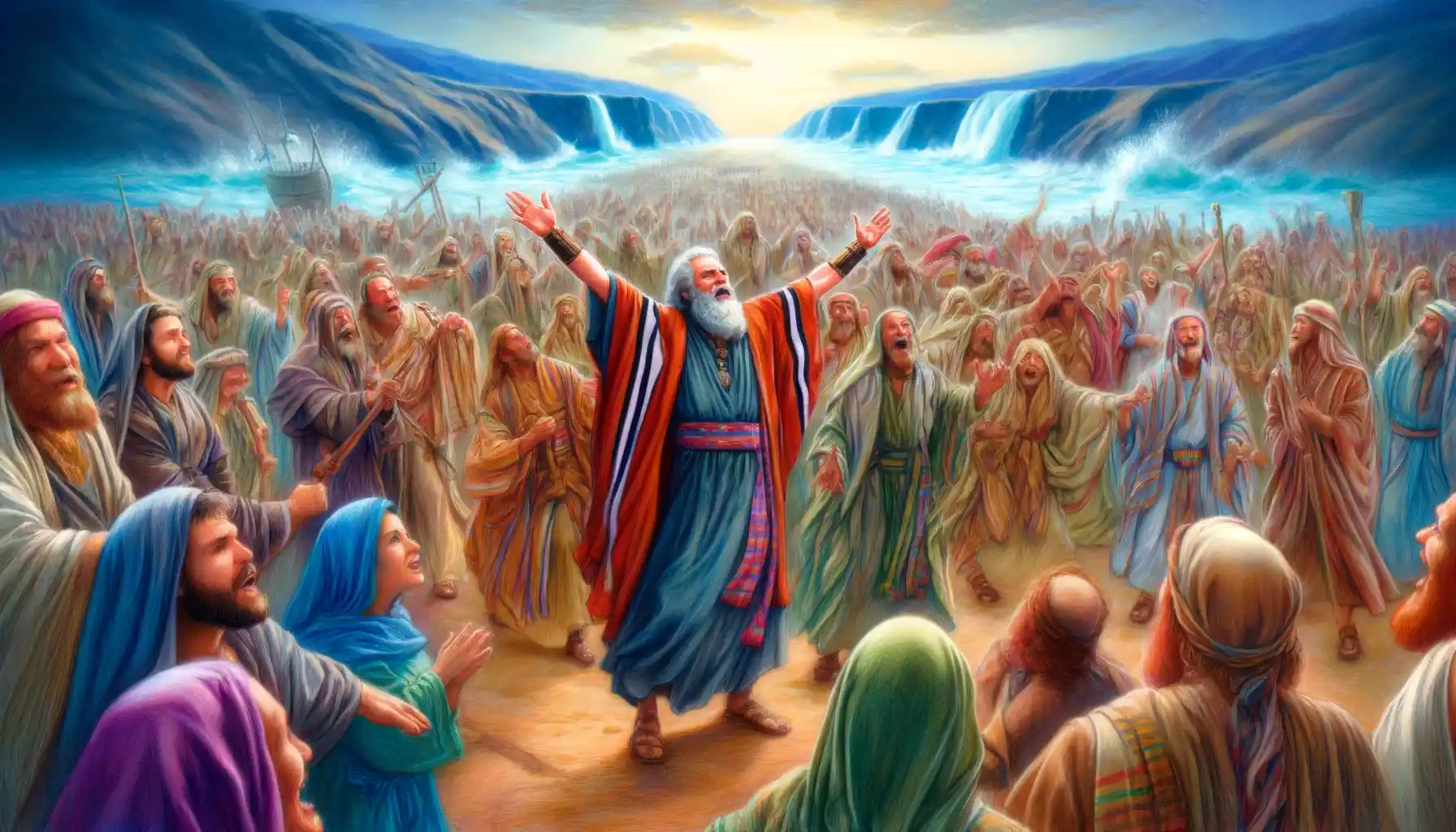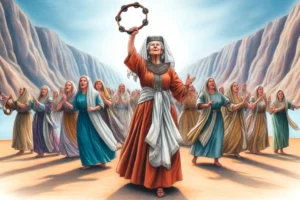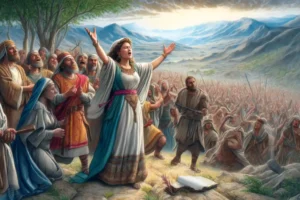
The Song of Moses
“The Song of Moses,” found in Exodus 15:1-18, is a profound piece of biblical poetry. Here are some quick facts about this important song:
- Authors and Singers: The song is attributed to Moses and sung by him along with the Israelites.
- Historical Context: It was sung after the miraculous crossing of the Red Sea, where the waters parted to allow the Israelites to escape and then closed back to drown the pursuing Egyptian army.
- Content: The song celebrates the deliverance of the Israelites from Egypt and the destruction of their enemies, highlighting God’s power and protection.
- Themes: Key themes include divine intervention, the sovereignty of God, the defeat of evil, and the promise of the promised land.
- Theological Significance: The song is a testament to faith and trust in God, recognizing His might and role as a protector and deliverer.
- Liturgical Use: “The Song of Moses” is used in Jewish liturgy, including during the Passover season, and is also referenced in Christian texts, notably in the Book of Revelation as a song of triumph.
- Cultural Impact: The song has been an influential text in understanding the Israelite identity, commemorating God’s saving acts in times of peril and serving as a foundational expression of Jewish worship and remembrance.
“The Song of Moses,” as recounted in Exodus 15:1-18, is a powerful hymn of victory and divine deliverance, celebrated by Moses and the Israelites following their escape from Egyptian bondage and the subsequent miraculous crossing of the Red Sea. This song not only serves as a testament to a pivotal event in Israelite history but also encapsulates key theological and liturgical themes that have resonated throughout Jewish and Christian traditions.
Historical Context
The song was composed and sung at a moment of immense relief and jubilation as the Israelites witnessed the miraculous destruction of the Egyptian army, which had pursued them to the edge of the Red Sea. The event itself—where God parted the waters to allow safe passage for the Israelites and then caused the waters to return, drowning the Egyptians—signifies a turning point in the Exodus narrative, marking the definitive deliverance of Israel from slavery.
Literary Structure and Style
“The Song of Moses” is structured as a poem, characterized by its lyrical beauty and the use of parallelism, a common feature in Hebrew poetry. This structure enhances the emotive and dramatic quality of the song, allowing it to powerfully convey the themes of triumph and divine majesty. The language used is rich in imagery, depicting God as a warrior and a protector, which reinforces the perception of God’s omnipotence and the assurance of His protection.
Themes and Theology
- Divine Intervention and Sovereignty: Central to the song is the celebration of God’s direct intervention in human history. It portrays God as the supreme being who controls the natural world and history for the benefit of His people.
- God as a Warrior: The song describes God as a warrior who fights on behalf of Israel, a theme that highlights the active and mighty nature of God in defending and leading His people to safety.
- Celebration of Victory: It’s a victory hymn that not only celebrates the immediate safety from their enemies but also the anticipated journey towards the Promised Land, reflecting a forward-looking trust in God’s continued protection and guidance.
- Foundation for Worship: The song sets a precedent for worship as a response to God’s deliverance. It exemplifies how acts of God are to be remembered and celebrated in communal worship, forming a fundamental part of the liturgical life of the community.
Liturgical and Cultural Impact
In Jewish tradition, “The Song of Moses” is integral to the Passover liturgy, which commemorates the Exodus and celebrates the themes of liberation and divine salvation. It is also echoed in Christian scripture in the Book of Revelation, where the song symbolizes ultimate salvation and victory over evil.
Conclusion
“The Song of Moses” is more than a historical recount; it is a theological affirmation of faith in the God who saves and protects. Its enduring presence in religious liturgy underscores its importance as a source of spiritual inspiration and as a doctrinal cornerstone in understanding the nature of God as both protector and liberator. This song thus serves as a powerful reminder of the Israelites’ collective identity, formed and sustained by divine acts of salvation.



